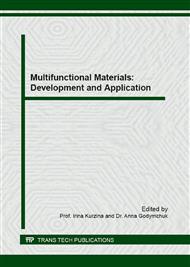p.136
p.142
p.150
p.156
p.162
p.168
p.174
p.181
p.187
Titanium and Zirconium Base Alloys in Ultra-Fine Grain State: Mechanical Stability and Failure Behavior
Abstract:
The method of grain refinement is described which is used to obtain titanium and zirconium base alloys in an ultra-fine grain state. The method involves abc-press forging and subsequent multiple-pass die rolling. It is shown that annealing performed at temperatures below the recrystallization threshold would cause formation of a stable nanostructure. The characteristics of such nanostructure would remain unaffected even at high plastic deformation levels until the fracture of the object made from this material. Both alloys having nanostructure are suitable for medical applications.
Info:
Periodical:
Pages:
162-167
Citation:
Online since:
February 2016
Authors:
Price:
Сopyright:
© 2016 Trans Tech Publications Ltd. All Rights Reserved
Share:
Citation:


